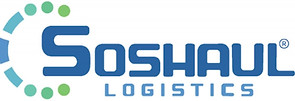What To Inspect When You're Inspecting
- Dr. Sean Goffnett

- Aug 7, 2023
- 5 min read
Updated: Oct 5, 2023
What to Inspect When You’re Inspecting – Your Vehicle?
Vehicle inspections are critical for the safety of not only yourself but for others on the road. This is a big reason why every employee of a carrier or trucking company that is directly involved with the inspection, upkeep, or maintenance of vehicles must comply with the rules and regulations of 49 CFR 396. Moreover, a motor vehicle shall not be operated in such a condition as to likely cause an accident or a breakdown of the vehicle.

When a CDL holder gets a roadside inspection violation, they are subject to Compatibility, Safety, and Accountability (CSA) points, a potential out of service (OOS) order, a substantial fine, and possible termination of employment. Taking the time to conduct proper pre-trip, en route, and post-trip inspections can lower your risk of being cited during a roadside inspection and being put out of service. These types of violations can damage your driving record. It can even impact your insurance coverage and premiums. Keeping up on inspections and maintenance keeps you rolling.
Are vehicle inspections required? What is Required for a Pre-Trip Inspection?
The Federal Motor Carrier Safety Administration (FMCSA) requires that drivers make sure that their vehicles and equipment are in safe operating condition before getting on the road (392.7(a)). To meet this requirement, and to be safe, drivers need to perform a pre-trip inspection. You should also check the last driver vehicle inspection report (DVIR) that was filled out (396.13). If there were any deficiencies noted in the report, then the driver must sign to acknowledge that the proper repairs have been made and any major issues have been corrected and are now resolved.
Learn about road-side inspections and Out Of Service (OOS) inspections and the various levels, such as Full, Walk Around, or Driver Only, by visiting FMCSA here. We will share details on these in separate blogs.
How Long Should It Take to Do a Pre-Trip Inspection?
A thorough and proper pre-trip inspection will take you about 30 minutes to complete, assuming there are no issues found. Take whatever time you need to work your way around every section of your vehicle to make sure you’ve inspected everything. But no matter how thorough you might be, you are bound to miss things now and again. And, even with ordinary wear and tear, stuff happens! Here are some commonly cited and commonly missed items during a pre-trip inspection that you should double-check before you get rolling:
What Are Some Commonly Cited or Commonly Missed Items When Driver’s Conduct Vehicle Inspections?
Brakes are one of the top reasons for being cited for a violation. In fact, it’s the number one reason for an out of service (OOS) order. Brakes are so important that they should be examined as part of pre-trip inspections, en route inspections, and post-trip inspections. Brakes are one of the hardest working components on your vehicle and subject to a lot of wear and tear. Testing them properly involves many steps inside and outside of your cab. It’s no wonder that brake-related violations are some of the most frequent! Make sure any necessary replacements and/or adjustments are made.
Tires are also one of the most frequently occurring violations cited during a roadside inspection. It’s another one that often leads to an OOS order. Regulation states that front tires shall have a tread groove pattern depth of at least 4⁄32 of an inch (or 1/8 of an inch) when measured at any point on a major tread groove Tire tread depths less than 2/32 of an inch (or 1/16 of an inch) (393.75). Just like brakes, tires are incredibly important in that they should be examined as part of pre-trip inspections, en route inspections, and post-trip inspections. Any issues must be noted in the DVIR and corrected before placing the vehicle back in service.
When CSA calculates scores on vehicles, tires fall under “Vehicle Maintenance” on the BASICs (Behavior, Analysis, Safety Improvement Categories) assessment. Information is gathered from roadside inspections to create scores that are weighted depending on the violations that are discovered. Tire violations carry some of the highest weight possible on the CSA scale:
8-point Tire Violations
Inadequate (low) tread depth
Flat tire with or without audible air leak
read or sidewall separation
Exposed fabric, ply, or belt material
3-Point Tire Violations
Re-grooved tires
Tire load weight rating
Under-inflated tires
Lights and reflectors make the top 5 list of most common violations and rank third in the list of reasons for being placed or ordered OOS. You can be cited for a violation for having defective reflectors or defective reflective strips on your vehicle. Make sure that reflectors are clean and free of any cracks, major scratches, tears, or markings.
The specific lights that are most often found to be not operable or inoperative that in turn lead to an OOS order are brake lights and turn signals. Either of these can result in an OOS order unless you have the correct bulb on hand to replace the old one and make the light operable again. It makes good sense and only costs a few cents, to carry extra light bulbs and fuses to make these on-the-spot corrections and keep rolling.
Emergency kits make practical sense, but you’re also required to carry an emergency kit containing a fire extinguisher, spare fuses, and warning hazard triangles (393.95). Double-check your kit to make sure you have everything and that the items are in good working condition. Remember that your fire extinguisher needs to be regularly serviced.
Check out our blog HERE that lists other important items to have in the truck.
The following tables, from the FMCSA, list some of the most common violations cited in each category.

Spending the right amount of time upfront to conduct inspections can prevent a lot of headaches and they can save you a lot of time and money in the end. Make pre-trip, en-route, and post-trip inspections part of your regular routine. Properly conducted driver vehicle inspections can help you save time and money and avoid the violations described above. Conducting these routine inspections makes it so you are better prepared for an official Periodic Inspection, which is supposed to be completed at least once a year by a “qualified” vehicle inspector, and Roadside Inspections, which occur more often and more at random than periodic inspections and are conducted by DOT or law enforcement. It’s important to know what to expect - and inspect - when inspecting.
Download our checklist templates for conducting Pre-Trip, En-Route, and Post-Trip Inspections and preparing Driver Vehicle Inspection Reports. Download today!
Ready to START, DRIVE, & ACCELERATE your trucking business? Check out our course here!

Interested in being notified when more free resources are available? Subscribe down below and you'll be the first to know!
Soshaul Logistics LLC and its affiliates do not provide tax, legal or accounting advice. This material has been prepared for informational purposes only, and is not intended to provide, and should not be relied on for, tax, legal or accounting advice. It is meant to serve as a guide and information only and Soshaul Logistics, LLC - Copyright 2023 - does not assume responsibility for any omissions, errors, or ambiguity contained herein. You should consult your own tax, legal and accounting advisors before engaging in any transaction or operation.




Comments